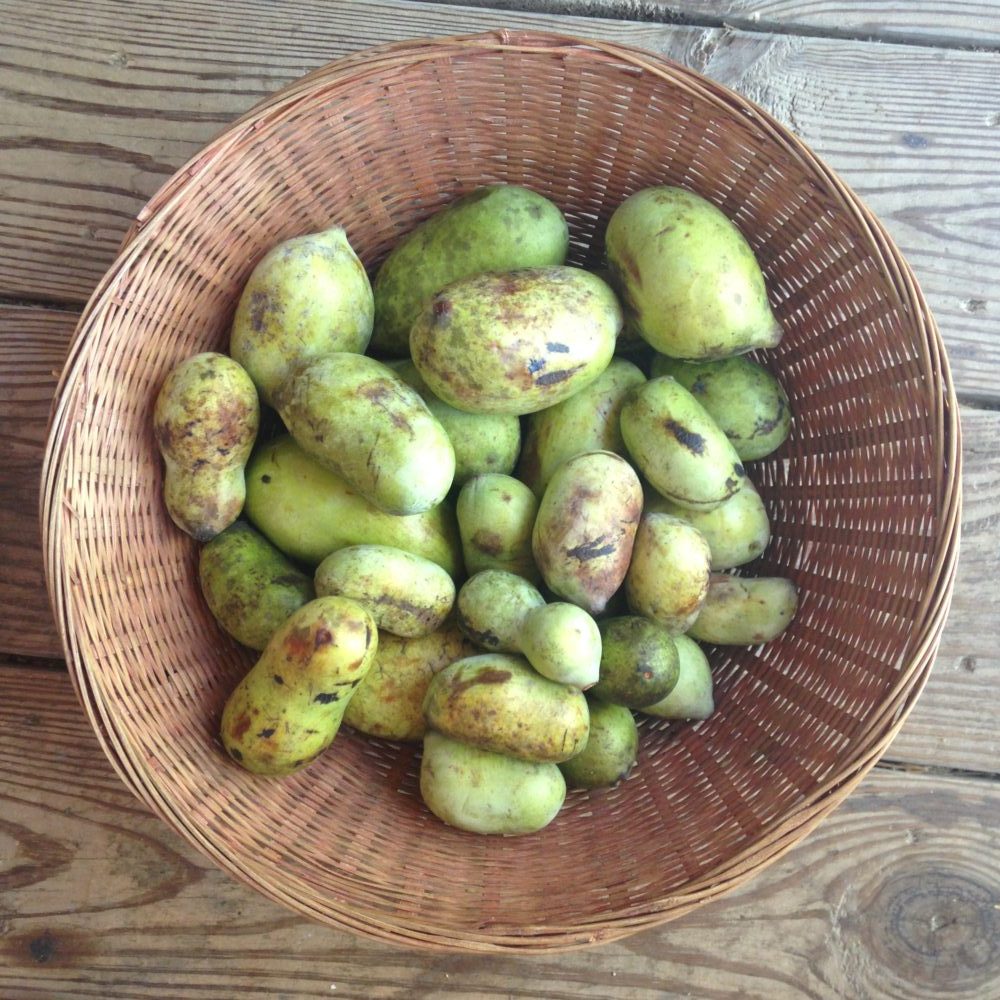By Casey Roe, Marketing & Sales Manager at Funny Girl Farm
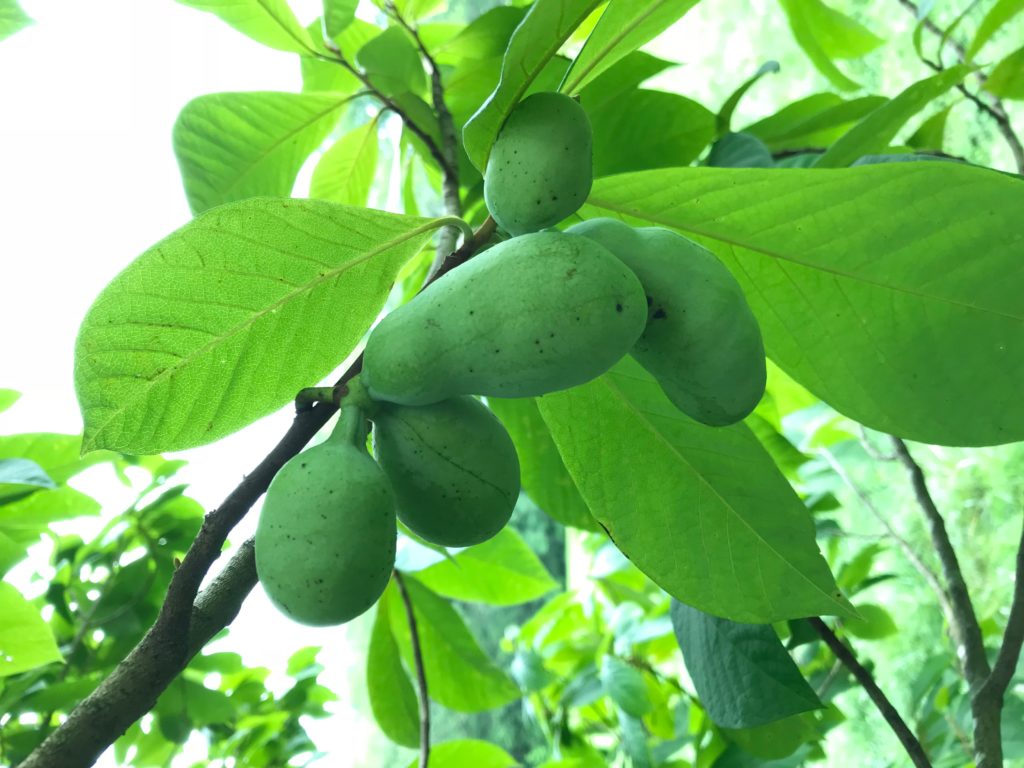
Unripe pawpaws clinging in a cluster
In the Carolinas, a native fruit is hiding in plain sight. The trees bearing this fruit have tear-drop leaves and thrive alongside creeks and streams. The fruit itself is oblong and clings to branches in clusters. They are green and growing for a moment, but within weeks, the fruit will begin to yellow and brown. They will then fall from the trees—ripe, custardy, and full of tropical banana-mango flavor.
What is this tropical wonder called? The pawpaw.
Pawpaws are North America’s largest native fruit. At Funny Girl Farm in Durham, North Carolina, we are lucky enough to have a pawpaw grove tucked along the creek that runs through the farm property. As the new trees prolifically spread alongside the bank, they will slowly mature: it can take up to eight years for a pawpaw tree to produce fruit. Last year, we harvested from more than 60 mature trees.
Treasure Hunting
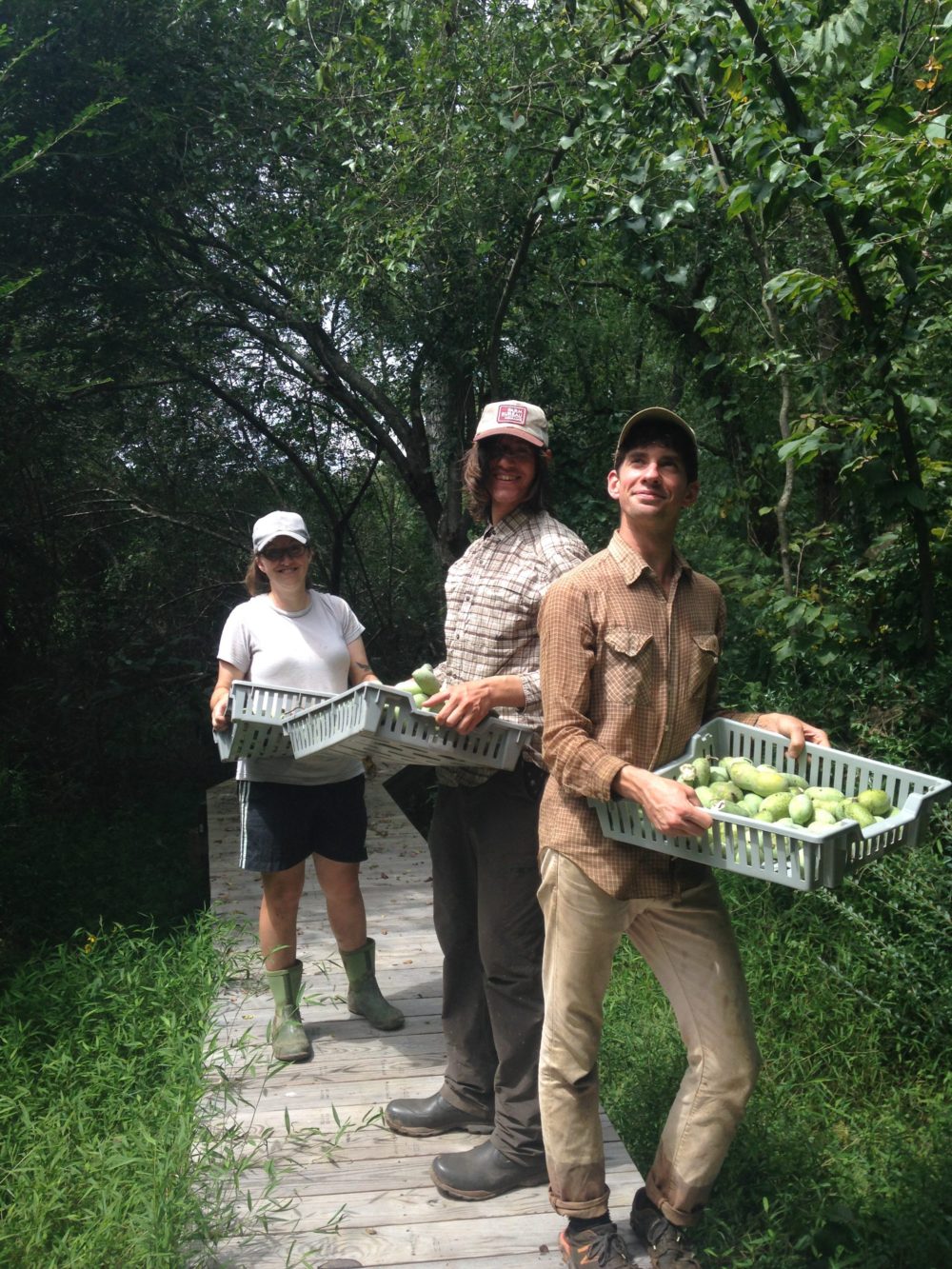
At Funny Girl Farm, we primarily grow vegetables and raise laying hens for eggs. Harvesting on our farm is usually organized and predictable. Most of the year, we know which plants are in each bed and the general volume of produce that we will pick. In late August, however, all bets are off; harvest becomes a treasure hunt.
Imagine walking through the woods—woods you’ve traversed many times—and suddenly finding the ground strewn with mangos. This is the odd experience of the pawpaw hunter.
During pawpaw season, we head into the woods with crates. In the right spot, when you look up, you’ll find fruit hanging in clusters above, similar to bananas. When the harvest is in full swing, the ground is littered with pawpaws in various stages of ripeness, some already nibbled on by wildlife like raccoons. The green tone of the pawpaw’s skin glows against the muted browns of the forest floor, making them easy to spot.
We gather pawpaws from the ground, as well as by shaking the mature trees gently. Ripe fruit makes a soft thump when they hit the ground—we’re sure to cover our heads with our hands when we shake the trees! When the pawpaws fall into the creek, we either wade in to get them or fish them out with a long stick. (One of our crafty farm volunteers even made us a custom pawpaw fishing net!)
Pawpaw season is short, lasting only about a month. Waiting all year for the fruit to grow and ripen makes the anticipation of one’s first bite of the season that much sweeter.
With Your Hands or With a Spoon?
While everyone seems to have a special technique for eating pawpaw, we’ve observed two main ways.
On the farm, we keep it casual and go for a utensil-less approach. The fruit’s skin is thin and doesn’t peel easily. The inside pulp is sweet, custardy, and filled with large seeds running perpendicular to the length of the fruit. Using our hands, we separate the skin and seeds and enjoy them then and there.
A more refined way to eat fresh pawpaw is chilled, sliced in half, and eaten with a spoon like a bowl of custard. One pawpaw myth maintains that chilled pawpaw was one of George Washington’s favorite desserts, possibly prepared for him by his enslaved chef, Hercules.
Archeological sites suggest that Native Americans feasted seasonally on pawpaws and used them in breads, stews, and a smoothie-like beverage.
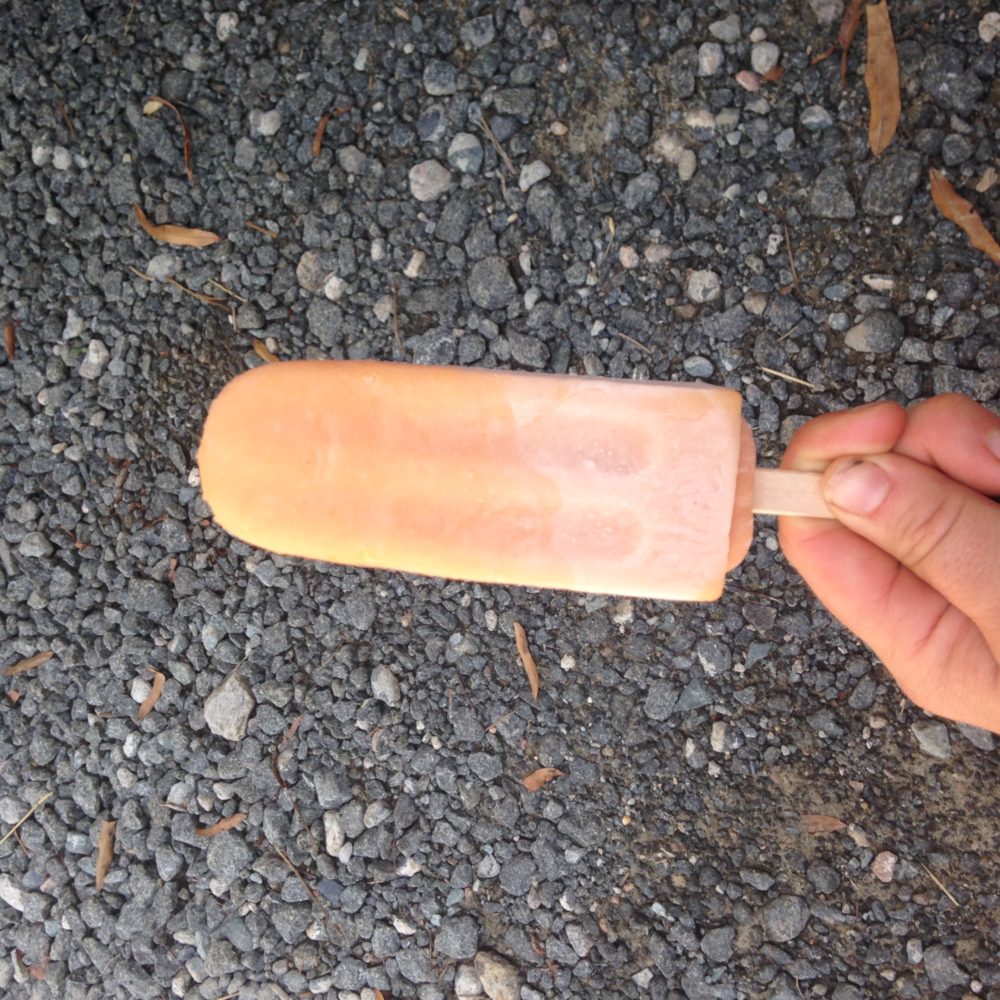
Pawpaw popsicle from Locopops in Durham
While part of the magic of pawpaws is that they already taste like a custardy dessert, they can also be used as an ingredient. Popular recipes include ice cream and smoothies. Fullsteam Brewery in Durham offers a seasonal pawpaw beer. Durham’s Locopops popsicle shop made a pawpaw “pawpsicle” using our fruit last year.
To avoid an unpleasant first pawpaw experience:
- Ensure that fruits are ripe by picking them up off the ground and only shaking trees gently;
- Peel away the skin of the pawpaw and spit out the seeds; and
- Use pawpaws fresh rather than dehydrating them.
You can get creative with pawpaws, but as cultivator Neal Peterson says, “fresh eating of the yellow flesh is the best…just enjoy it the way Mother Nature intended!” We tend to agree.
Come Have a Taste
In our globalized food system, we’ve become more familiar with fruits from far away than some of the fruits growing in our backyards. In terms of common knowledge in society, pawpaws are a forgotten fruit. Still, we’re hopeful to see a small resurgence in interest driven by articles like “This Once-Obscure Fruit Is On Its Way To Becoming PawPaw-Pawpular” by Ally Schweitzer from NPR.
The more we know and enjoy pawpaws, the more important it feels to share them with our community and to protect them for the future. This year, we’re having a celebration at our farm to do just that.
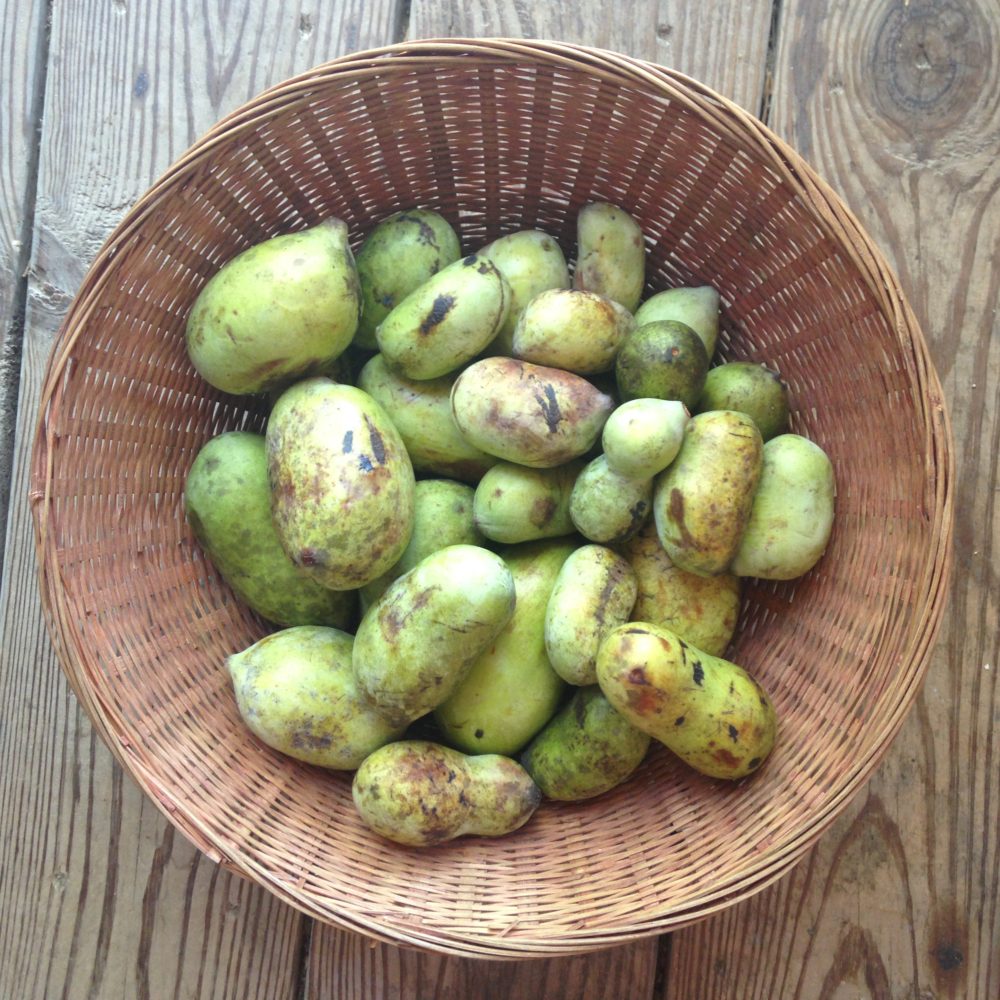
Come taste pawpaw at our Pawpaw Pawp Up at our farm stand, during our regular hours from Saturday, Sept. 1 to Friday, Sept. 7. We’re open Saturday 9 a.m. – 3 p.m. and Tuesday to Friday 2 – 6 p.m.
We’ll have pawpaw for samples and sale (while they last!) and local vendors sampling and selling other goods. On opening day, Saturday, Sept. 1 from 9:30 – 10:30 a.m., we’ll have a ticketed event for children and families with live music, instrument making, and pawpaw education. Join our Facebook event for updates to the schedule of events for the whole week.
Hungry for More?
If you’re interested in the history of pawpaws, their plant biology, or how a dedicated group of pawpaw enthusiasts are trying to elevate modern cultural awareness of this fascinating fruit, we recommend Andrew Moore’s 2015 book Pawpaw: A Search for America’s Forgotten Fruit.
- Read first seven pages of Moore’s first chapter, “What is a Pawpaw,” over on Chelsea Green for a sneak preview!
Casey Roe is the Marketing & Sales Manager at Funny Girl Farm and a budding pawpaw enthusiast. Follow Funny Girl Farm on Facebook and Instagram for updates on our pawpaw availability and much more!


